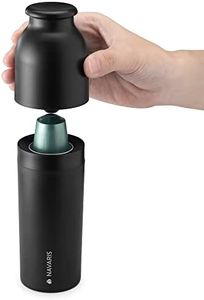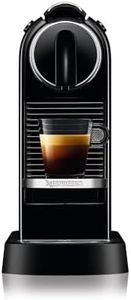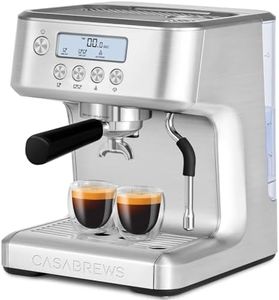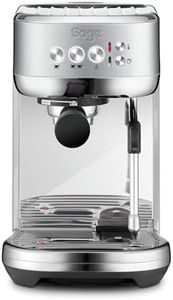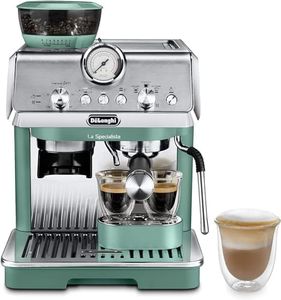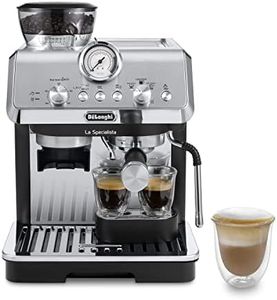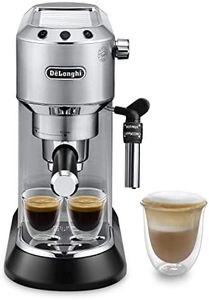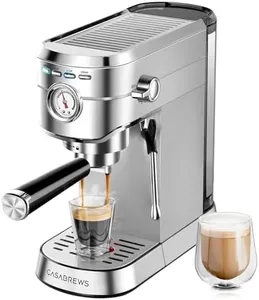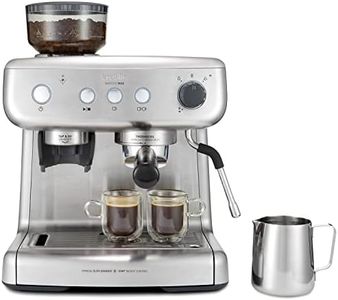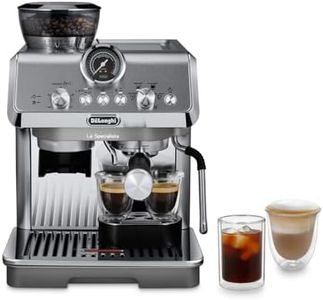10 Best Espresso Machines 2025 in the UK
Our technology thoroughly searches through the online shopping world, reviewing hundreds of sites. We then process and analyze this information, updating in real-time to bring you the latest top-rated products. This way, you always get the best and most current options available.

Our Top Picks
Sage - The Barista Express - Bean to Cup Coffee Machine with Grinder and Milk Frother, Brushed Stainless Steel
The Sage Barista Express is an all-in-one espresso machine that’s designed for those who enjoy crafting their coffee at home. One of its standout features is the integrated conical burr grinder, which grinds coffee beans directly into the portafilter, ensuring fresh grounds for each brew. The machine includes a precise digital temperature control (PID) to maintain the optimal temperature for espresso extraction, which helps in getting balanced flavors from the coffee. Additionally, the low-pressure pre-infusion feature ensures that the coffee grounds are evenly saturated for a consistent extraction process.
For those who like to enjoy milk-based coffee drinks, the manual microfoam milk texturing feature allows you to create creamy and silky milk foam, which is perfect for latte art. The grind size dial is also a noteworthy feature, offering users control over the coarseness of the grind, which is essential for different types of coffee beans and personal preferences. However, the Sage Barista Express might be slightly bulky for smaller kitchens, given its dimensions (31 x 40 x 33 cm) and weight (10.6 kg). Additionally, this machine does not have an auto shutoff feature, which could be a concern for some users.
This espresso machine is ideal for coffee enthusiasts who are looking for a high-quality, feature-rich coffee maker that allows for a lot of customization and control over the brewing process.
